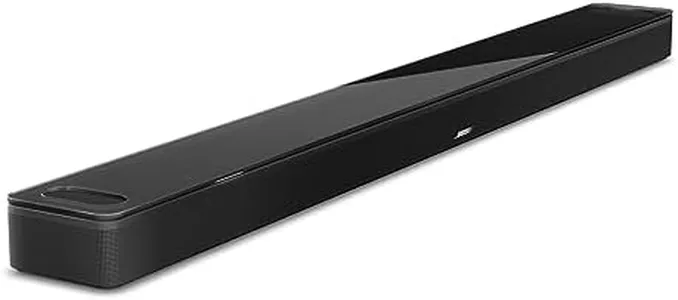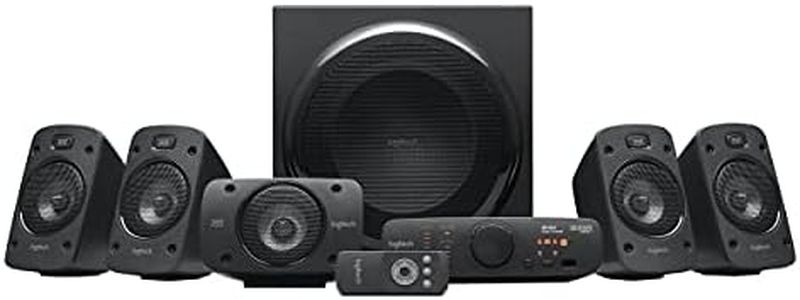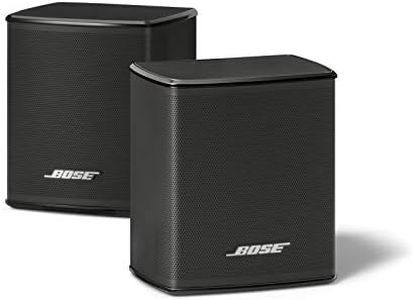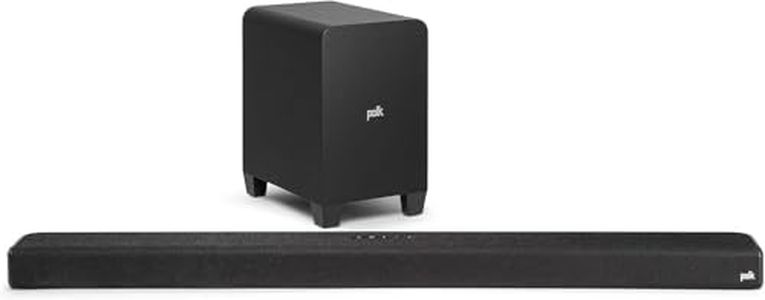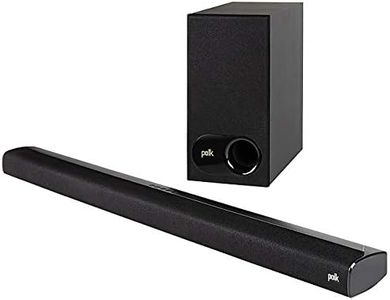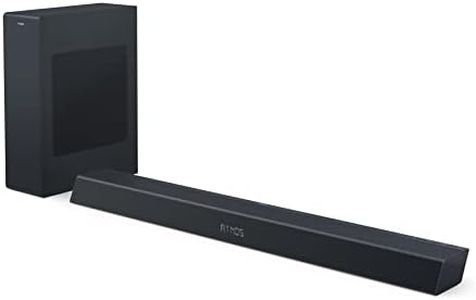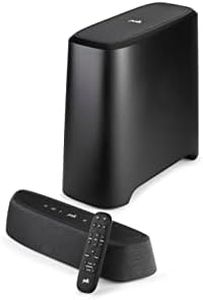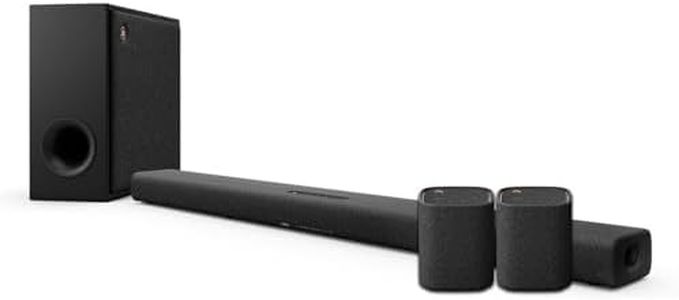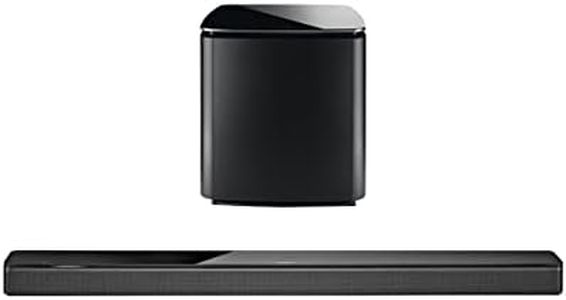We Use CookiesWe use cookies to enhance the security, performance,
functionality and for analytical and promotional activities. By continuing to browse this site you
are agreeing to our privacy policy
10 Best Wireless Surround Sound Systems
From leading brands and best sellers available on the web.By clicking on a link to a third party's website, log data is shared with that third party.
Buying Guide for the Best Wireless Surround Sound Systems
Choosing the right wireless surround sound system can greatly improve your home entertainment experience, making movies, music, and games more immersive. The key is to match the system's features to your room size, listening preferences, and how you'll use it. Before buying, think about where you'll place the speakers, whether you want it to integrate easily with your TV or other devices, and how simple you want the setup and control to be.Number of ChannelsThe number of channels refers to how many separate audio points or speakers the system has, like 5.1 (five speakers and one subwoofer) or 7.1 (seven speakers and one subwoofer). More channels can create more detailed surround sound, making the experience more immersive. If you mainly have a small or medium room or mostly watch movies, a 5.1 system can be enough. For larger rooms or if you want more detailed positioning of sounds, you might prefer 7.1 or higher. Think about your room size and how cinematic you want the audio to feel—more channels add complexity but also realism.
Wireless TechnologyWireless technology describes how the speakers communicate with each other and the main control unit. Some use Wi-Fi, others use Bluetooth, and some proprietary connections. Wi-Fi usually provides better sound quality and stability, with less risk of dropouts, while Bluetooth is easier for quick setups and connection with phones. Choose based on how strong your home network is and whether you value higher sound quality or simplicity and quick pairing.
Audio Formats SupportedAudio formats like Dolby Atmos, DTS:X, and standard surround sound describe the type of audio experience you get, from basic surround to 3D sound that feels like it's coming from above and all around. Advanced formats like Dolby Atmos need specific speaker placements and are best for people who love immersive sound in movies and games. If you're more casual or mostly listen to TV or streaming, a system supporting standard formats will work just fine.
Speaker Size and Placement FlexibilitySpeaker size affects both the loudness and the richness of the sound. Smaller speakers are easier to fit and look more discreet but might not fill large rooms or deliver deep bass. Placement flexibility is about how easy it is to put speakers where you want them, either on shelves, stands, or wall mounts. If your space is tight or uniquely shaped, look for systems with flexible setup options or compact speakers.
Subwoofer TypeA subwoofer is responsible for deep bass sounds, adding impact to movies and music. Some systems include a wireless subwoofer, which allows flexible placement, while others might use a wired one. For small rooms, a smaller subwoofer may be enough; in larger spaces or if you love powerful bass, look for a larger subwoofer or a system that lets you add extra bass units.
Control and IntegrationControl and integration refer to how you manage the system and connect it with other devices. Some systems come with dedicated remotes, others use smartphone apps, and some integrate with smart home assistants like Alexa or Google Assistant. If you value convenience, look for a system that works with how you already control your home devices. If you're not tech-savvy, prioritize ease of use and setup.
ExpandabilityExpandability describes whether you can add more speakers, subwoofers, or upgrade your setup later. This is important if you think your needs might change, or if you want to start small and build up your system over time. If you're planning for a future move to a bigger space or different room arrangement, check if the system can grow with you.
